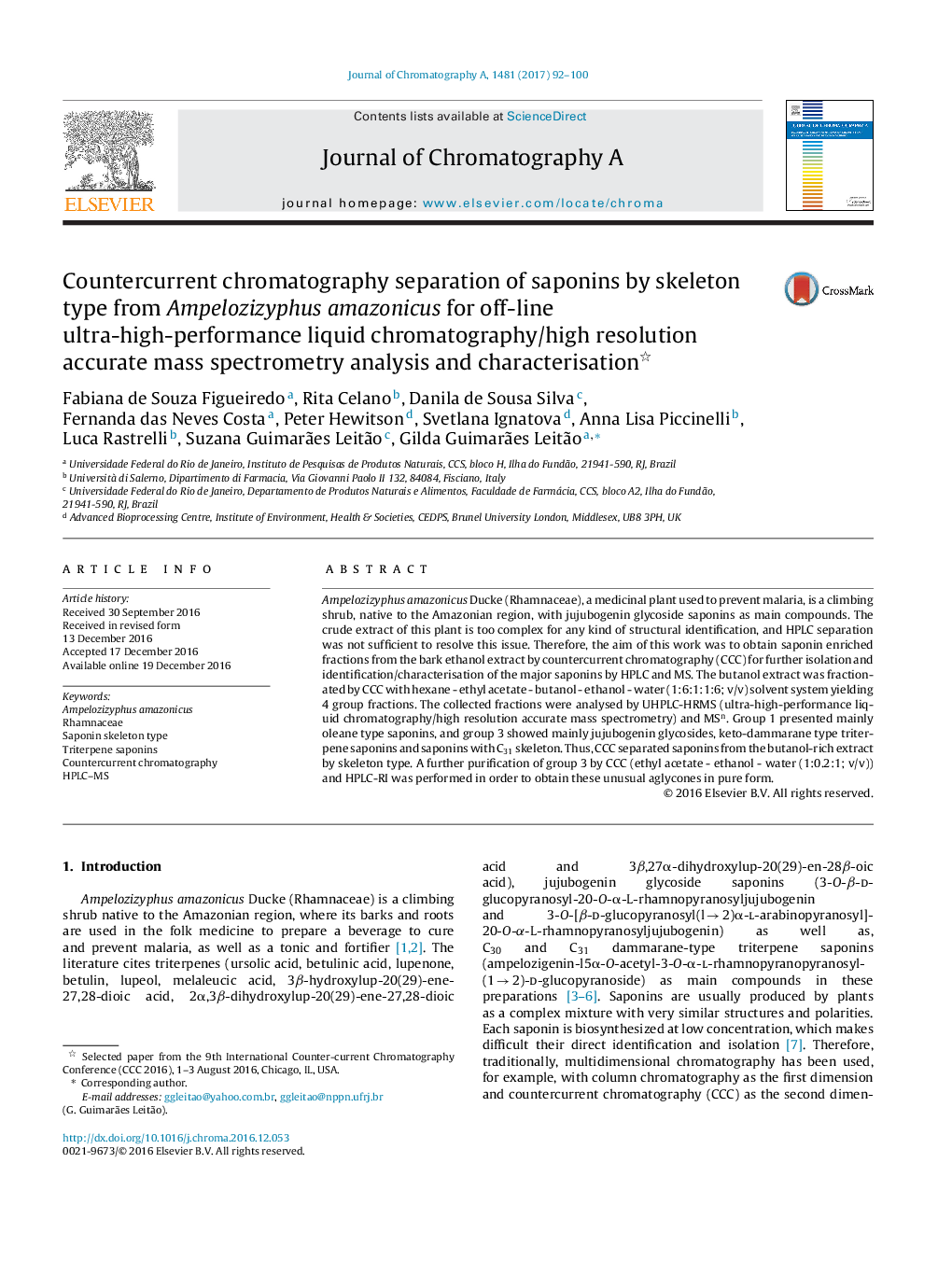| Article ID | Journal | Published Year | Pages | File Type |
|---|---|---|---|---|
| 5135926 | Journal of Chromatography A | 2017 | 9 Pages |
â¢Methodologies were developed for separation and characterisation of butanol extract from Ampelozizyphus amazonicus bark.â¢CCC separation of saponins by skeleton type from butanol extract produced oleane type and dammarane type groups.â¢The characterisation of saponins was done by UHPLC-MS.â¢Unusual aglycones saponins as C30 and C31 keto-dammarane were characterized by UHPLC-MS.
Ampelozizyphus amazonicus Ducke (Rhamnaceae), a medicinal plant used to prevent malaria, is a climbing shrub, native to the Amazonian region, with jujubogenin glycoside saponins as main compounds. The crude extract of this plant is too complex for any kind of structural identification, and HPLC separation was not sufficient to resolve this issue. Therefore, the aim of this work was to obtain saponin enriched fractions from the bark ethanol extract by countercurrent chromatography (CCC) for further isolation and identification/characterisation of the major saponins by HPLC and MS. The butanol extract was fractionated by CCC with hexane - ethyl acetate - butanol - ethanol - water (1:6:1:1:6; v/v) solvent system yielding 4 group fractions. The collected fractions were analysed by UHPLC-HRMS (ultra-high-performance liquid chromatography/high resolution accurate mass spectrometry) and MSn. Group 1 presented mainly oleane type saponins, and group 3 showed mainly jujubogenin glycosides, keto-dammarane type triterpene saponins and saponins with C31 skeleton. Thus, CCC separated saponins from the butanol-rich extract by skeleton type. A further purification of group 3 by CCC (ethyl acetate - ethanol - water (1:0.2:1; v/v)) and HPLC-RI was performed in order to obtain these unusual aglycones in pure form.
